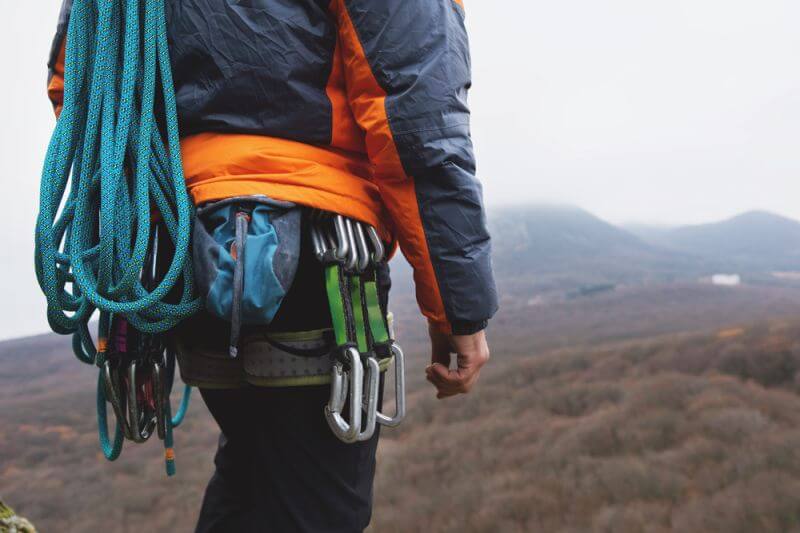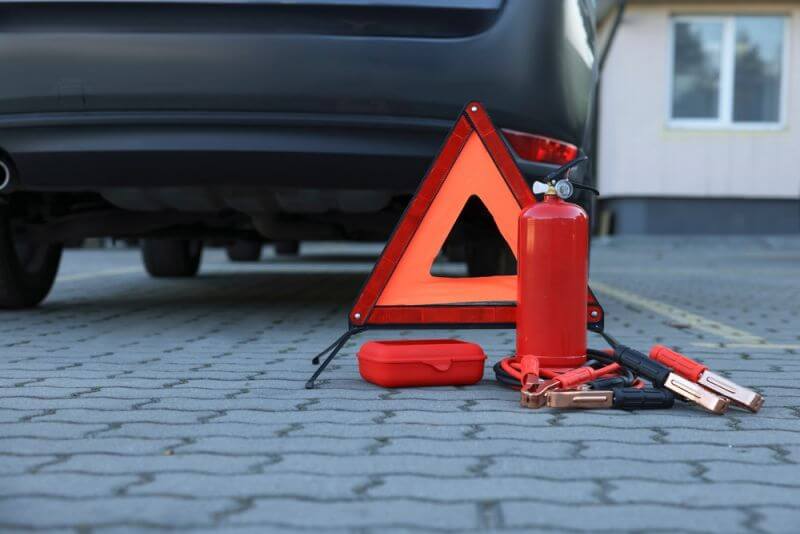Before relocating to Cache Valley, which was the safest place in the nation at the time I moved, owned a home and a business in a high-crime part of the Metro-Phoenix area. I had cars stolen twice, and my business was broken into about every six months until I upgraded my security to the point where they gave up.
I learned a lot in the process … enough that my IT company started installing alarm systems and reselling alarm monitoring. Most importantly, I stopped getting regular wake-up calls from the alarm company to drive to my business, talk to the police (who thought I robbed myself half the time) and sweep up glass at 2am.
Let’s discuss what does and doesn’t work in a layered defense.
The Human Factor
No matter how much expense or effort you put into protecting your home, it can be circumvented in an instant by human error. To limit human error, you should conduct frequent training and childproof and idiotproof your security SOP and security systems, conduct period security tests and surveys.
For example, if all packages and mail are sent to another address and mail service to your residence is stopped, there is no reason to ever open the door to sign for certified mail or packages. So, separating your mailing address from your residence address is not only good for your privacy, but also for your security.
Don’t build your systems and SOP for exceptional people and geniuses. Build them for idiots, children, and people having the worst day of their lives. If you could build a security SOP a “… well meaning, elderly man with a poor memory …” could follow, you’d have a very secure home indeed. You can’t let grandpa store classified documents in the garage next to the old car he never drives.
Beyond the Perimeter
Proactive home and retreat security starts beyond the perimeter of your property. What’s happening in the surrounding land or neighborhood affects your home and family. If there are predators out there, it’s better to spot them before they enter your land and devour your livestock or molest your family.
Red Team Your Home
When I took my first dynamic entry/high-explosive breaching course, decades ago, I started to look at home defense differently. I started to look at it through the eyes of the red team breaking into the home or retreat instead of the blue team defending it. Red teaming your home is an important part of an effective defense.
In the process or red teaming your home, you’ll learn the avenues of approach, the best places to observe your home from, where they would install cameras, how a criminal would case it, where a SWAT team might stage before coming to your home, where they would make entry, where they would have to stack up, where the fatal funnels are, and so on.
Based on what you learn, harden your home. Then, once you think your home is secure, get your special forces buddy to put a team together to red team your defenses. Then harden it some more based on what you learn. Hardening a site is a cycle. The more times it is repeated, the harder it gets.
Research
Pull up the county assessor’s website and print a map that shows nearby properties and their owners. Take a look at the sex offender registry and add that information.
Patrol the Area Around Your Home
Get out and get to know your neighborhood and your neighbors. Patrol at all times of day but do so randomly. Pretty soon you’ll be able to spot activity that doesn’t match the baseline. Consider joining or starting the neighborhood watch program, but don’t share your own security measures and efforts with others.
Identify Natural Track Traps or Create Artificial Ones
Tracking can tell you who has been in anywhere in your area of operations, not just in the field of view of cameras, and it is not dependent on batteries, vulnerable microelectronics, the grid, or the internet, all of which makes it an indispensable tool.
Track traps are areas that preserve footprints. They can be natural, such as dusty, muddy or snowy patches, or artificial such as when Border Patrol drags tires down the shoulders of dusty desert roads. Locating or creating track traps beyond your perimeter is discrete and doesn’t have the downsides of installing expensive electronics on land that doesn’t belong to you. By observing track traps in different terrain and weather conditions and watching them age, anyone can learn to estimate the age of tracks.
Perimeter
The perimeter of your property is typically at your fence or property line. This is where you can start installing most security measures since you own it. You need to know when someone comes on to your property uninvited.
Fences
Have a survey done before putting up fences. This can save huge headaches down the road. Check local codes for restrictions on types and height of fences, check local ordinance regarding posting fences, and obtain any necessary permits before erecting fences.
According to Nolo, many states require fences to be posted “No Trespassing” in order to convict an offender of criminal trespass. (Jessica Gillespie, 2023)
Fences are the first line of defense. Some types of fences present a physical barrier and others merely a psychological one.
Landscaping & Lighting
Landscaping shouldn’t give criminal concealment to hide themselves or hard cover. Motion-activated lighting can help draw attention to nocturnal intruders.
Exterior Biological Alarm Systems
Dogs that bark and certain livestock, like donkeys and geese, can make it harder to sneak onto your property. Some even defend against predators.
Not all dogs, however, are up to the task. There are tons of videos of crooks getting past dogs. Unless your dogs are well trained, they may provide a false sense of security.
Cameras
Security companies (who sell cameras) point to studies that cameras reduce crime. It sounds logical because most folks are afraid of cameras, so they imagine that criminals must be afraid to commit crimes on cameras too. Maybe they do help reduce certain categories of crime, but in my experience, putting up visible cameras did not prevent the type of crime I experienced, which was mostly smash and grab. I got broken into about once every six months before cameras and after cameras.
Installing cameras not only didn’t prevent the break-ins from happening, but they also didn’t help solve a single crime either. Here’s how the conversation went with the police officer looking at the video:
Me “There he is.”
Police Officer “OK, so we’ve got a Hispanic male, about 5’4”. Well, that narrows in down to about 2 million guys in Phoenix. That doesn’t narrow it down much!”
Cameras can help law enforcement know where to dust for fingerprints is a homicide, but real life is not like TV cop shows. I reported a dozen or more crimes and the only time a criminal was charged when a couple of lowlifes tried to carjack my wife.
I heard her screaming, grabbed a firearm and ran out to the carport. We played a quick game of “rock, knife, 12-gauge” and when they saw they lost, you know what they did? They did their level best to transform from bangers, brandishing knives, screaming expletives and demanding car keys, into saintly community college students, who only had a 10” kitchen knife for a cooking class, and responded, “Yes, sir! No, sir!”, and as my wife called the cops, they called the cops too! Fortunately, the cops didn’t buy the ruse. It didn’t help that they had to hop a 7’ fence posted “No Trespassing!” to get to the carport.
Back to cameras, here are a few bullet points:
- Internet Connectivity – Connecting your security system to the internet enables you to view it remotely. It also potentially enables others to view your cameras remotely if they are able to hack it.
- Camera Placement – Do you want cameras on the perimeter looking beyond it, inside the perimeter to catch trespassers and other criminals, or do you want them inside the home too? Cameras can also be used against you and the future of cameras integrated into AI-powered security systems is unknown. With the possible exception of a baby monitor to keep an eye on very young children I don’t want anything recording video or audio inside my home.
- Hidden Cameras – Every porch pirate knows about video doorbells, so if you want to catch someone without a mask, use a peephole camera. If you think cameras deter quick crimes like stolen packages and smash and grabs, then get a doorbell camera. My experience is that that don’t prevent these types of crime.
Hidden cameras have also been used to catch dirty cops. Police raiding a medical marijuana dispensary in Santa Ana were famously caught eating the marijuana edibles and joking about kicking a wheelchair bound amputee in her “nub.” They entered the place wearing face coverings, which they only removed after ripping the visible camera system out of the walls. Once they thought they were no longer on camera, the criminal behavior commenced.
- AI – The more people you have coming and going, the harder that job becomes. AI-powered camera-based security systems claim to remedy that, but in some cases, fooling them has been as easy as printing an image of your face and wearing as a mask. Research carefully before you believe sales claims. They are famous for over-promising and under-delivering.
Other Sensors
Radio frequency motion detectors and driveway alarms can alert you to movement zone on homesteads and in big yards.
Cheap radio motion detectors can be found for as little as $10-$15 on sale and can be modified to make them more difficult to detect. The model sold by Harbor Freight has a 400’ range. They can alert you if someone messes with a vehicle or outbuilding.
Game cameras let you know who and what is on your property. Some can even notify you and send you the pictures via a cellular connection.
… continued in Part 2
References
Jessica Gillespie, M. (2023, November 03). Criminal Trespassing Law. Retrieved from Nolo: https://www.nolo.com/legal-encyclopedia/criminal-trespassing-law.html










Ronald H Levine | July 26, 2024
|
Since this is just part one, my assumption is you will at least touch upon peririmiter detection particularly since you relocated to Cache Valley. I’ll wait for the rest of the article series to see your insights on that.
The most dangerous threats will scout out and observe perhaps for days before they put to use what they learned. Advance knowledge of this is valuable.
I use high resolution thermal imaging that would detect a man at a mile regardless of camouflage.
[email protected]
Ronald H Levine | July 30, 2024
|
Stealth. – Fancy security, depending upon circumstances, entices the desperate even more, so with that thought, I established this is not about these good times, but concepts for the harsh times to come or perhaps well into it because as the inept die off, that leaves the capable that have been gaining experience, gang members and weaponry with their successful looting and worse. Do I really want to put up the equivalent of a billboard saying I have a bounty to protect here! Similarly, I don’t want to attempt fooling them with the rundown already looted look because desperation means checking and conquering everything is what they do. In sharp contrast, as they’re looking as they go by, they won’t see anything.
[email protected]